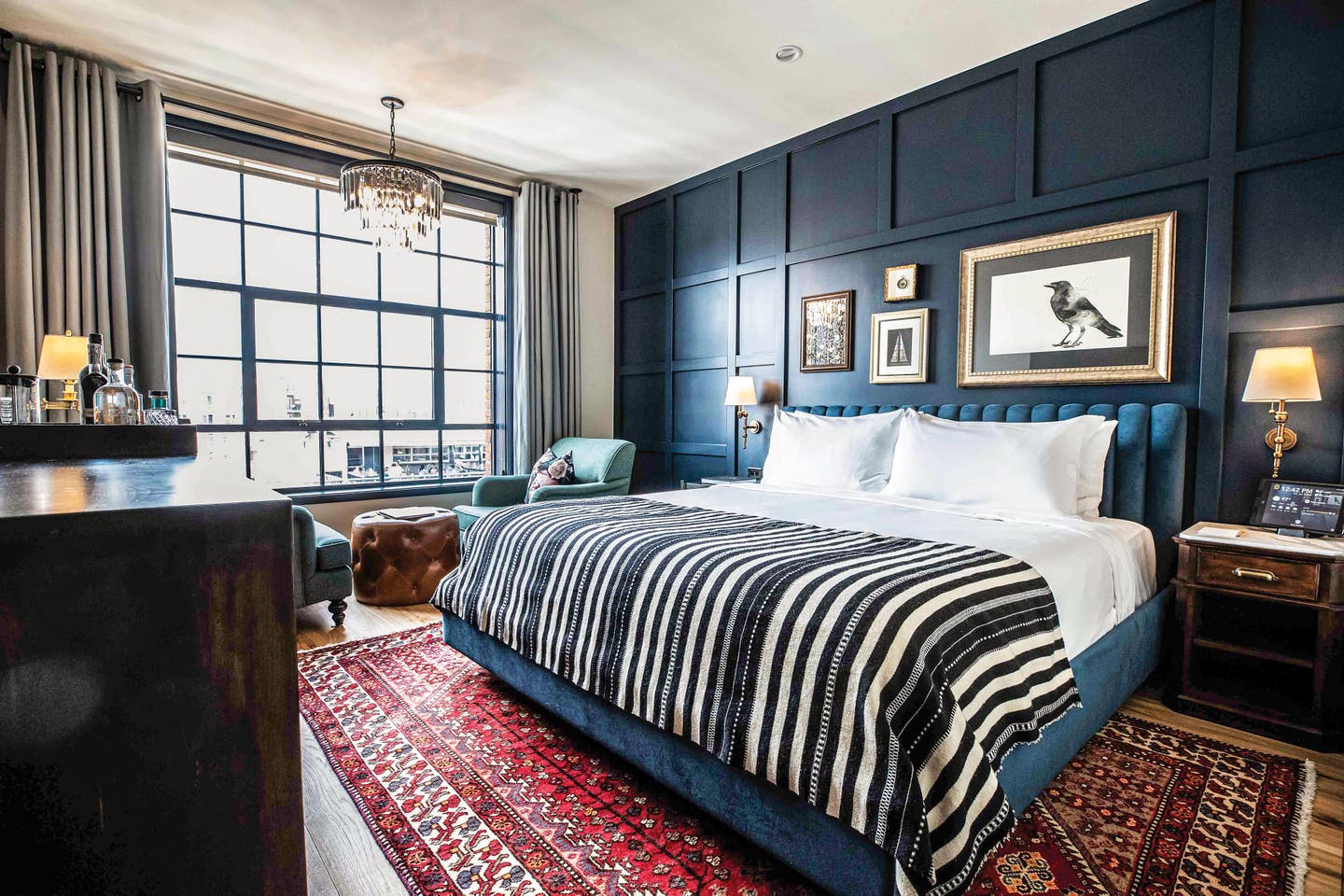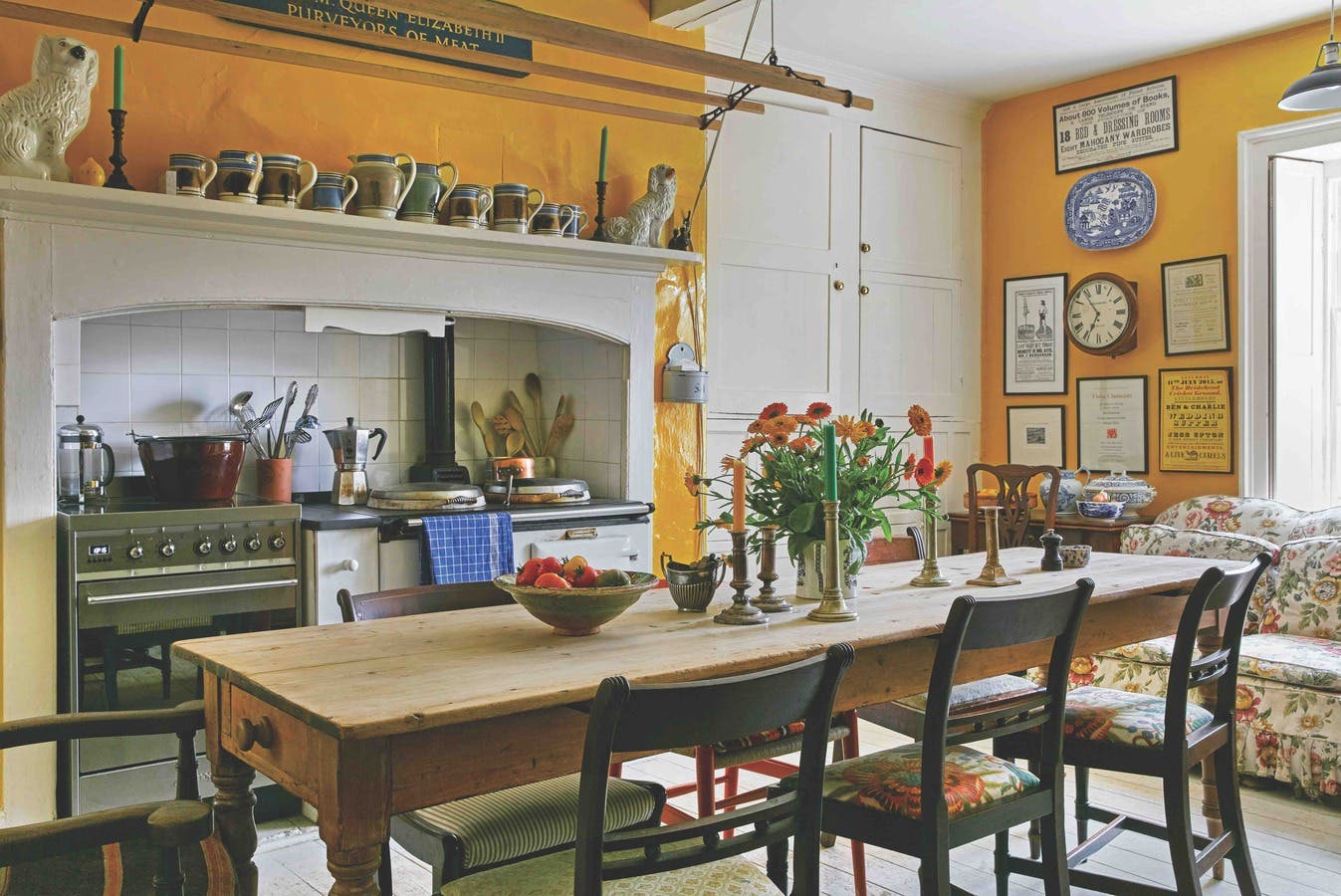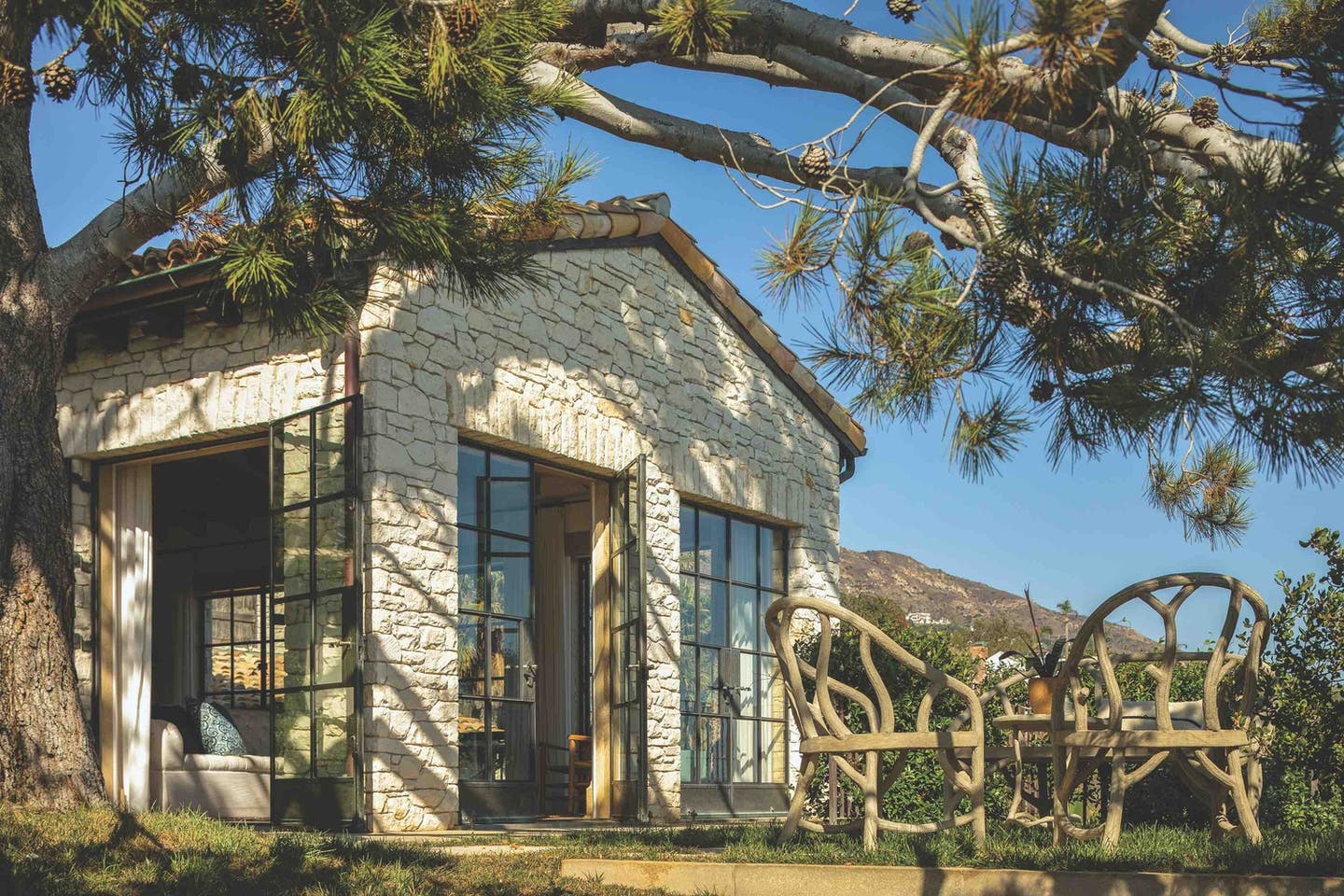
Projects
The Ramble Hotel in Denver
From a seat inside The Ramble Hotel lobby, Ryan Diggins looks out toward a series of reclaimed shipping containers. They contribute to the artsy industrial vibe surrounding his venture at 25th and Larimer Streets. The container cluster includes Work & Class, Topo Designs, and Cart-Driver—all of which are Diggins’s doing. And, as of May 2018, the Denver-based real estate developer and partner at Gravitas Development Group has added this bespoke hotel to his portfolio.
Located in the city’s River North Art District (RiNo), The Ramble is both a nod to a former era and a reaction to the divisive state of architecture and design in Denver today. Working with architecture firm Johnson Nathan Strohe, Diggins was determined to not only fill the need for a hotel but also to distinguish the neighborhood. “This is a warehouse district full of a lot of beautiful masonry that we wanted to honor . . . and elevate,” he says, noting that the project is his response to the many hastily constructed buildings going up with alarming regularity—the majority of which were designed without regard for the surrounding neighborhood and cultural context. It was also important to him that RiNo’s first hotel be the work of a local company.
Their general contractor, Sprung Construction, was an important partner as well.
Capitalizing on the district’s artistic roots and entrepreneurial spirit, Diggins developed his vision for an upscale, early 20th-century–inspired warehouse featuring vernacular brick and timber. The challenge, he notes, was to create something authentic yet new and fresh without getting into “the realm of faux” that characterizes Disney World. “For me, it all started with the quality of materials,” he explains. “None of it was meant to be a veneer. We worked with hand-cut brick and fourth-generation masons who cared—who had time to care. It was important to us to work with contractors who viewed this as a legacy building. Anyone who was involved had to understand the statement opportunity we could make with this building.”
Though new, The Ramble Hotel appears to be a restored historic building. That illusion has much to do with its detailing. The brick coursing of the parapets, for example, includes ten depth changes. Diggins explains: “We tasked our architects with creating a lot of different reliefs and coursing models. There are two rows of brick coursing above all of the windows, which create a visual separation between floors. There’s a slab bump-out on the third floor, which was difficult to construct, but we wanted a third floor that extends out to enable more depth as well as an additional row of coursing on the third floor.” He also points to the recessed grout line as instrumental to the building’s feel. The raked joint carves out a bit of the grout so the eye can pick up each individual brick as opposed to reading it as a vast flat wall. The brick itself was hand cut so it has imperfections, which Diggins believes triggers something in people—for him, there’s “a human scale” to the masonry.
The brick color was key, too. Many of Denver’s old warehouses have a deeply saturated orange hue stemming from the Central Platte Valley clay. Diggins says it took time to find the right material and that contemporary brick, with its sheen-producing appliqué, wouldn’t do because of the modern look it creates. “Once we found that brick, it brought it all home,” the developer notes, adding that his team probably spent more money on detailing than was necessary but that the effect—even on the average passerby who doesn’t care about brick coursing details—is profound and informs visitors’ expectations of the building. “I wanted this building to make people feel a certain way from four blocks away,” Diggins explains. He also envisioned the structure aging into one of the top hotels in the country. So, as he puts it: “You can’t start by skimping.”
Not surprisingly, considerable thought and time were devoted to the factory-pane windows and glazing system—a critical detail in honoring warehouse-style construction. Traditionally, they would have been all-steel with a thin profile. Here, that was cost-prohibitive, so they went with steel replica frames and 10-foot dark-gray reproduction windows and doors from St. Cloud Window. “I think this would have really fallen down if you looked up at the building and saw two-and-a-half-inch aluminum frames,” Diggins speculates. “We really tried to pick apart the details that would make this building authentic.”
Among those details are the custom steel column wraps cast in decorative moulds at the entry, which are intended to imitate the cast-iron columns seen on early 1900s buildings. “It took a long time to find the perfect articulation and shadow line,” Diggins notes. “We studied a lot of old buildings around Denver to determine the right thickness.”
The 50-room hotel houses Death & Co., a cocktail lounge with café bar, as well as Suite 6A, a private bar with a distilled drinks tasting menu, and The Garden, a courtyard bar. It is also home to Vauxhall—a music venue, theater, and bar—and Super Mega Bien, a pan-Latin restaurant by James Beard-nominated chef Dana Rodriguez. Accordingly, the interiors needed to fit a tall bill. The warehouse structures after which the hotel was modeled were traditionally spartan inside; here, the idea was to take vernacular cues and infuse them with elegance. Diggins worked with Avenue Interior Design to re-create some of the opulence and maximalism found in boutique Parisian hotels. “It’s a juxtaposition of hard surfaces, reclaimed materials, unpolished concrete columns, and hand-molded brick, against ornate chandeliers and velvet couches,” he explains, adding that the exterior is rather masculine while the softer, more feminine approach inside presents an unexpected twist on the gritty industrial aesthetic.
One of the more commented on interior elements are the 12-foot-tall custom steel panels with chicken wire glass (salvaged from New York’s Rockefeller Building). They were fabricated and mounted on casters as a solution to the problem of how to transform the morning coffee bar into a cocktail service bar come evening. “We needed to find a way to creatively transition the space because it is tough to do both well,” Diggins explains. When stacked in the morning, the panels appear to be a design statement; at night, they fit onto an imbedded track in the floor and slide to close off the space, creating a zone where staff can go back and forth with drinks from the bar. “It’s something we were really struggling with and it became one of the signature design details,” says Diggins. “It’s a classic example of necessity spawning creativity.”
Diggins predicts that many of the buildings going up in Denver right now will have a 25-year useful lifespan. He foresees The Ramble surpassing that mark by a long shot. “We sought to create a 100-year building,” he says. “The environment was telling me that if we invest in materials and [skilled workmanship], there will be a return on quality.” He read the situation correctly. First-year financials met what was forecast for year five; and the investors were stabilized three months after opening. Arguably, the numbers are a testament to the value of a well-executed design.
“It’s an art and a science creating something that feels like it has been here and that elicits a visceral reaction for the right reasons,” Diggins says in closing. Judging from the uproarious buzz surrounding the place, The Ramble strikes that very chord.








